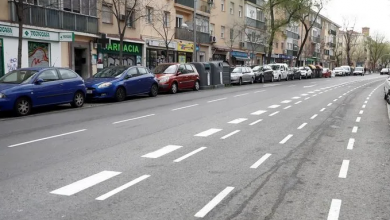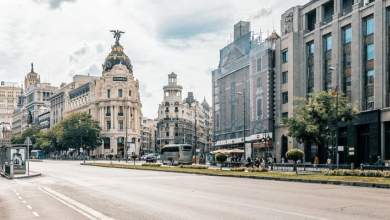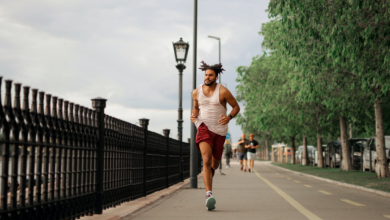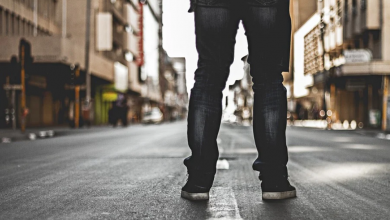Why is the safety distance not respected when advancing a cyclist?
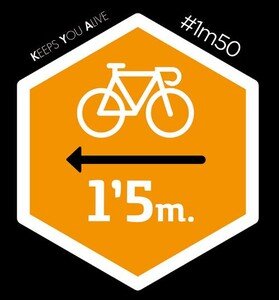
We do Eco of an interview made by the platform conbici.org where Ian Walker expert from the University of Bath, England, who has conducted a study of the causes why Respect the safety distance when advancing a cyclist
The use of mandatory helmet in urban areas is one of the measures proposed by the draft of the new general circulation regulation. The reform has mobilized against all cyclists, a reaction that does not seem to understand the population that does not use the bicycle as a means of transport and equates the helmet to safety.
To understand this reaction we have contacted Ian Walker, PhD in psychology at the University of Bath, England, where he develops his work and research as a psychologist specializing in traffic, transport and environmental behavior. In 2006 he published a study (1) that showed that Helmeted cyclists were more likely to be run over by a motor vehicle. He himself was run over twice while performing the experiment with a bicycle equipped with a computer and ultrasound sensors that measured the distance of overtaking and, on both occasions, wearing the helmet.
The experiment collected 2.300 overtaking on a type path to work, by urban and interurban areas, and one of the biggest discoveries was that drivers, when overtaking, tend to pass closer to cyclists wearing helmets.
Are you a regular driver, cyclist, pedestrian or the three things according to the moment?
I drive, I drive, I ride a bike or on a motorcycle. I use what best suits my travel. If I'm only going to travel four kilometers, I do not find any sense in using a motor vehicle.
Do we behave differently depending on the mode of transport we use?
Our streets and laws encourage it. When a person gets into a car, suddenly, they are "more important" than a pedestrian, the person who goes on foot has to wait for the one that goes by car and not the other way around. It may not be surprising that some people, but not all, become selfish and aggressive when they drive.
Why this change occurs?
There are many theories! Some believe that being locked in a car and isolated from other people, leads to less cooperation. And being, relatively, anonymous is also bad, people behave differently when they know there will be no consequences. Compare how you travel in large cities, where you never meet again, and in small towns, where you will meet again.
What led you to investigate the position of the bicycle on the road?
Mainly the cyclists are run over because the cars tend to go very fast when they exceed them. Also, people are frightened by the feeling of having someone driving very close and do not want to use the bicycle. That's why I decided to investigate, to know how far the drivers leave. I found that the more focused I was in the lane, the less space the cars left me. This is a problem: driving on the right side of the road would mean that cyclists would have more space when they go ahead, but it is not possible to drive through an area that always has holes, debris, etc.
What have been the main conclusions of your investigation?
I have found that drivers respond to the cyclist's appearance. The space they leave when they advance depends on this. It is a good thing because it means that drivers are aware of their behavior, but bad because they are only imagining what the needs of each cyclist are, in fact they can not know how much space each bike needs. It would be good if, in general, they were more cautious.
As a psychologist, were you expecting these results?
Partly! Right now we are investigating again, we want to know how the ideas that drivers have about cyclists affect when choosing more or less separation in their overtaking.
Do you think wearing a helmet prevents cyclists from being run over?
No. The helmet is for after the shock. It does not do anything to prevent the collision, and this is the main problem that should worry us. Our efforts should focus on ending the abuses, not trying to reduce the damage after a terrible event (the crash) has occurred. We should focus on the drivers changing their behavior not on the people who ride the bicycle, they are the ones who make the roads dangerous. The person who causes the danger is the one to act on.
Do drivers respect men as well as women cyclists when overtaking them?
No, drivers leave more space for women. We have proven it in the United Kingdom, the United States and Taiwan.
How can you explain that in countries like Denmark or the Netherlands, with a high percentage of cyclists, of which only between the 1-2% wear a helmet, the mortality rate among these is lower than in countries like Australia where the helmet is required?
There are many reasons but, probably, the most important ones are: they build streets that are suitable for cyclists, they have laws that protect people who ride a bicycle, and many of the drivers also use the bike and therefore know how to drive safely among cyclists .
The helmet is not the solution to give the cyclist safety because he does nothing to avoid the collision. If you want to give security to the cyclist you have to end the abuses, which is what they have done in countries like Denmark and Holland. All efforts should be focused on this.
What is, in your opinion, better in general for public health: protect the cyclist's head or protect their hearts and in general those of the entire population by encouraging them to ride a bicycle, even without a helmet?
The risk of dying at an early age due to cycling is very small, the risk of dying young for not doing enough exercise is enormous. In thousands of occasions people die because they have not exercised enough. Your life expectancy increases when you use the bicycle and this has been proven again and again by medical research.
What is more dangerous for safety on streets and highways, cyclists without helmets or reckless drivers?
The drivers!
You probably know that the DGT in Spain wants to approve a traffic regulation that will force cyclists to wear helmets in urban areas. As an expert in psychology, what are the main consequences of the compulsory nature of the helmet for people who cycle by urban areas?
There is no evidence that a mandatory helmet reduces head injuries, because the helmet does not prevent collision. When a person is hit by two tons of metal at high speed, a small piece of foam is not going to do anything. Cycling helmets are intended for low speed falls, they do virtually nothing to protect cyclists when they are struck by a motor vehicle.
Do you think the main safety issue for cyclists has less to do with the helmet than with other factors?
Yes, it has to do with how cyclists are valued by society. In societies such as the Dutch or the Danish in which cycling is respected, people who ride bicycles have good infrastructure and laws that protect them. In countries where cycling is not respected, cyclists are left at risk and, in addition, they are held responsible when a driver runs over them. A country that has the helmet as mandatory respects the dangerous and polluting cars more than the healthy and harmless bicycles. It is a very retrograde approach.
What would be, in your opinion, the best measures for safe cycling?
Safer routes, segregated from motor traffic; harsher laws that force drivers to drive more carefully between cyclists and a culture of biking or walking which would mean that drivers would know what it feels like to walk or bike in traffic.
There are no previous results.








